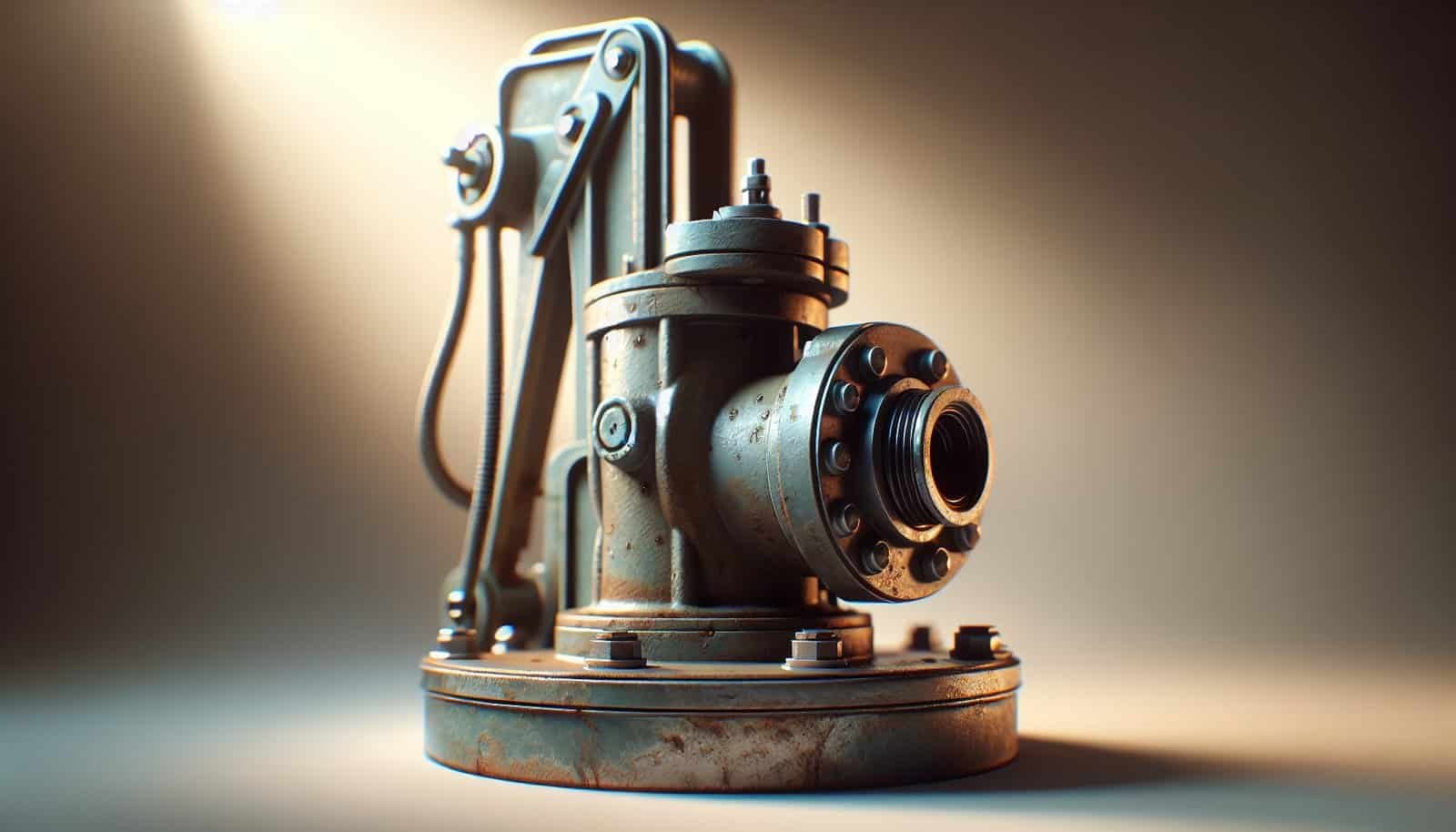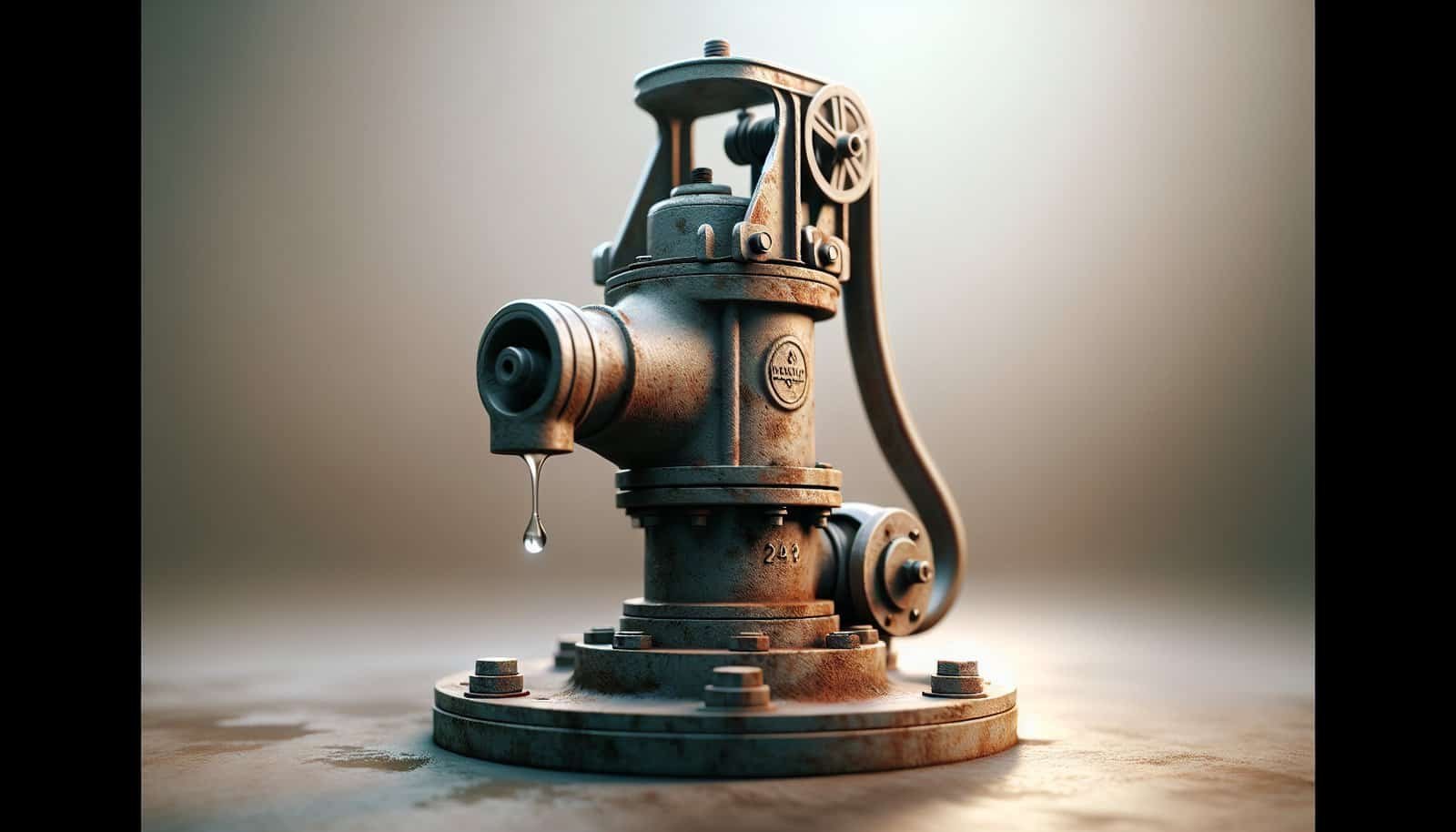? Why is the water pressure in your well suddenly lower than it used to be, and what can you do about it?

What Are The Common Causes Of Low Water Pressure In Wells?
This article explains the most frequent reasons your well water pressure may drop and how you can identify and address each cause. You’ll get practical checks you can perform, explanations of technical issues, and guidance on when to call a professional.
How a Well System Works
Understanding how your well system functions makes it easier to spot what’s gone wrong when pressure drops. In general, a well system draws water from underground and uses a pump and pressure tank to deliver that water at stable pressure to your home.
Types of Well Pumps
Your well will typically use either a submersible pump or a jet (surface) pump, and each type has different failure modes. Knowing which pump you have helps you narrow down likely causes when you experience low pressure.
| Pump Type | Where It’s Installed | Common Issues |
|---|---|---|
| Submersible | Below water level inside well | Motor failure, debris-clogged intake, electrical faults |
| Jet (surface) | Above ground, in pump house | Air leaks in suction line, priming problems, worn impellers |
Knowing the pump type guides your troubleshooting and helps you describe the problem accurately to a technician if you call one.
Basic Components of a Well System
A typical well system includes the pump, pressure tank, pressure switch, check valve, piping, and electrical controls. Any of these components can cause low pressure if they malfunction, become blocked, or are improperly adjusted.
Common Symptoms of Low Water Pressure
Low pressure may present as weak flow at a single faucet, poor flow at multiple fixtures, or intermittent pressure that comes and goes. Identifying whether the problem is isolated or system-wide is the first step toward an effective fix.
Immediate Checks You Can Do Yourself
You can perform a few simple checks safely to determine whether the issue is plumbing-related, pump-related, or due to high demand. These basic steps often point to whether you need specialized tools or professional help.
Check Faucets and Fixtures
Start by checking several faucets in different parts of the house, both hot and cold. If only one fixture is weak, the problem is likely a local clog or valve issue rather than a well problem.
Check Other Taps and Appliances
Turn on the outdoor spigot, washing machine, and shower to confirm the pressure pattern across systems. Consistently low pressure at all points indicates a system-level issue.
Inspect Pressure Gauge
Locate the system pressure gauge on or near your pressure tank and observe it while a faucet is both closed and open. If the gauge shows low pressure even when a faucet is closed, it probably indicates a pump, tank, or switch issue.
Check Pressure Tank (If Visible)
Look for obvious signs like leaks, rust, or waterlogged appearance on the tank. Gently tap the tank: a hollow sound near the top and a dull sound near the bottom usually means the tank has air in the upper section and water in the lower section as expected.

Mechanical and Equipment Causes
Mechanical failures are common culprits of low water pressure because moving parts wear, seals fail, and electrical components can malfunction. Equipment issues often require diagnosis with proper instruments and sometimes replacement parts.
Failing Well Pump
A failing pump may run but not deliver full flow, or it may cycle frequently (short-cycling). If your pump has lost capacity due to age, motor winding problems, worn impellers, or damage from debris, you’ll notice reduced flow and possibly strange noises.
Pressure Tank Problems
Pressure tanks regulate system pressure so the pump doesn’t have to start every time you open a faucet. When the tank’s air cushion fails or the bladder ruptures, you’ll experience short pump cycles and fluctuating pressure.
Bladder or Diaphragm Failure
If your tank has a bladder or diaphragm and it ruptures, the tank becomes waterlogged and cannot cushion pump cycles. You’ll likely hear the pump switch on and off frequently and see the pressure drop quickly when water is used.
Loss of Air Charge
A tank that loses its air charge will behave similarly to a waterlogged tank because the pump must work more often to restore pressure. Recharging the tank or replacing the air valve can fix this, but the root cause must be determined.
Tank Corrosion or Leaks
Rust or leaks reduce tank effectiveness and may lead to sudden drops in pressure if the tank cannot hold air or water properly. A visibly corroded or leaking tank should be serviced or replaced for safety.
Pressure Switch Faults
The pressure switch tells the pump when to start and stop based on pressure readings. If the switch’s contacts are pitted, misadjusted, or sticking, the pump may not run long enough to build pressure or may short-cycle.
Clogged or Dirty Pump Intake
Sediment, mineral deposits, or biological growth can clog the pump intake and screens, reducing the volume of water the pump can deliver. This is common in wells with high sediment content or after a well disturbance.
Worn or Leaking Check Valve / Foot Valve
Check valves keep water in the system under pressure when the pump is off. A faulty check valve or foot valve allows water to flow back into the well, causing the pump to lose prime or the system to need frequent restart.
Improper Pump Size or Age
If the pump is undersized relative to your household demand or simply old and worn, it may not maintain adequate pressure. Upgrading the pump or replacing an aging unit often resolves chronic low-pressure problems.
Water Supply and Well Performance Causes
Sometimes the issue isn’t equipment failure but rather the amount of water your well can supply at the time of need. Groundwater levels and aquifer dynamics directly influence well performance.
Low Static Water Level or Drawdown
Static water level is the height of water in your well when the pump is off. If the static level drops below the pump intake due to seasonal changes or overuse, the pump will struggle and pressure will fall.
Seasonal and Environmental Changes
During dry seasons or prolonged drought, groundwater recharge slows and wells may yield less. You might notice pressure loss that correlates with seasonal patterns.
Aquifer Depletion or Reduced Well Yield
If nearby wells or changes in the aquifer have reduced the available water, your well may no longer provide the volume of water it once did. This typically causes long-term rather than sudden pressure reduction.
Casing or Screen Blockage and Sediment Accumulation
Over time, the well casing or screen can accumulate mineral scaling, sand, or biofilm that restricts water flow into the well. A professional cleaning or rehabilitation may be required to restore yield.
Well Collapses or Gravel Pack Issues
Mechanical damage inside the well, such as a collapsed formation or degraded gravel pack, can reduce flow paths to the pump. Repairing these issues often requires specialized well intervention.

Plumbing and In-House Issues
Low pressure can originate inside your home’s plumbing rather than the well itself. Checking the internal system helps rule out distribution problems.
Clogged Pipes and Mineral Buildup
Scale from hard water, rust, or sediment can constrict pipes and fixtures, reducing water flow. You’ll often notice low pressure more at hot water taps or older fixtures with restricted aerators.
Closed or Partially Closed Valves
Valves that are partially closed from recent work or accidental adjustment can cause localized low pressure. Verifying all isolation and service valves are fully open is a quick, often overlooked step.
Pressure Regulator Malfunction
Some homes have a pressure regulator to limit incoming pressure. If this regulator fails or is set too low, all your fixtures will have reduced pressure until it’s adjusted or replaced.
Water Treatment Equipment Causing Restriction
Filters, softeners, and reverse osmosis systems can clog or become restricted, especially if maintenance is overdue. If low pressure follows the installation of a new system, that equipment may be the cause.
Frozen Pipes
In cold climates, frozen sections of pipe significantly reduce or stop flow altogether. Thawing and insulating vulnerable lines will restore pressure and prevent repeat issues.
Air in the System and Water Hammer
Air mixed with system water or trapped in the pump suction line causes irregular pressure and sputtering flow. Conversely, sudden pressure changes (water hammer) indicate poorly supported piping or pressure control issues.
Air Leaks in Suction Line (Jet Pump Systems)
Jet pumps rely on a sealed suction line; any air leak will reduce pump efficiency and cause loss of pressure. Tightening fittings, replacing worn suction hose, or repairing a cracked pipe often fixes this.
Air in Pressure Tank or Lines
Air trapped in the pressure tank or lines can cause spitting faucets or fluctuating pressure. Properly charging the tank and bleeding air pockets from lines will stabilize flow.

Electrical and Control Problems
Electrical issues are common and sometimes subtle; they can cause pumps to underperform, run intermittently, or fail entirely. Ensuring safe electrical troubleshooting practices is important.
Tripped Breakers or Faulty Wiring
Circuit breakers that trip or loose wiring connections reduce power to the pump, causing underperformance. Resetting a trip can be temporary; persistent trips often indicate an electrical fault or pump overload.
Malfunctioning Control Box or Capacitor (for Submersible Pumps)
Submersible pumps have control boxes and start capacitors that can fail. If the pump hums but doesn’t run fully, a bad capacitor or control module may be the cause.
Pump Overheating and Thermal Overload
If a pump runs in low-water conditions or under excessive load, it may overheat and trigger thermal protection. Frequent overload trips shorten the motor life and indicate an underlying flow or electrical issue.
External Factors and Demand Issues
Sometimes the problem isn’t mechanical at all but comes from increased demand or changes in how the system is used. Understanding usage patterns helps you judge whether you need capacity upgrades.
High Household Water Demand
Multiple simultaneous uses—laundry, showers, dishwashers, irrigation—can exceed pump capacity and result in low pressure. Staggering water use or upgrading pump/tank capacity may be necessary.
Shared Well or Neighboring Wells
If your well is hydraulically connected with neighbors and the shared resource is heavily used, your pressure can suffer. Cooperative management or a better-capacity pump may be required.
Construction or Nearby Drilling
Construction, dewatering, or new nearby extraction wells can temporarily lower groundwater levels or increase turbidity. Monitoring water levels and contacting local authorities can clarify whether the change is temporary.

Troubleshooting Steps You Can Follow (Step-by-Step)
These steps help you isolate whether the low-pressure issue is at the fixture, inside the home, a system component, or a well performance problem. Perform these steps in order and record what you observe.
- Observe multiple fixtures. Check hot and cold taps all around your home, outdoor spigots, and appliances. This tells you if the problem is isolated or system-wide.
- Inspect the pressure gauge. Note the pressure reading with taps closed and when a tap is open. If pressure never reaches the pump’s cut-in/cut-out range, suspect pump or pressure tank issues.
- Check the pressure tank. Tap it, look for leaks, and feel for temperature differences. A waterlogged tank or failed bladder shows rapid pressure drops and frequent pump cycling.
- Examine aerators and faucet cartridges. Unscrew aerators and run water with them removed to see if flow improves. If flow returns, clean or replace the aerator or cartridge.
- Test water at the well head or pump house. If you can get to the pump house, run water there and note if pressure is strong before distribution. Strong pressure before the house but weak inside suggests a distribution plumbing issue.
- Listen for pump behavior. Note if the pump runs continuously, cycles rapidly, or starts and stops infrequently. Each pattern points to different causes: continuous run often means low supply; short cycling indicates tank or switch problems.
- Check for obvious leaks. Inspect visible piping, fittings, and basement floors for water. Large leaks in the distribution system can reduce pressure markedly.
- Review recent work or changes. Consider filter changes, plumbing repairs, or appliance installations that preceded the problem. Reversing a recent change can sometimes restore pressure immediately.
- Measure static water level (if you can or with help). A significant drop indicates supply issues like aquifer pressure or well yield reductions. This test often requires a professional with appropriate equipment.
- Call a licensed well professional if tests don’t isolate a simple fix. A pro can perform pump performance tests, check electrical load, and log drawdown to diagnose clearly.
Quick Reference Table: Causes, Signs, and Initial DIY Fixes
| Cause Category | Typical Signs | DIY Checks / Quick Fixes |
|---|---|---|
| Pump failure | Weak flow, strange sounds, no flow | Listen to pump, check breakers, note motor hum |
| Pressure tank issues | Short cycling, pressure swings | Tap tank, check air charge, inspect for leaks |
| Pressure switch | Pump won’t start/stop correctly | Look for corrosion, check switch settings |
| Clogged intake/screens | Reduced steady flow | Run well without filters, inspect screen (pro) |
| Check/foot valve | Pump loses prime, frequent starts | Observe loss of prime; professional replacement |
| Low water level | Intermittent low flow, seasonal | Note correlation with heavy use or season |
| Plumbing clog | Low flow at single fixture | Clean aerators, check faucet cartridges |
| Water treatment | Low flow after equipment | Bypass filter/softener to test flow |
| Electrical faults | Pump won’t run or intermittent | Inspect breaker, wiring, call electrician |
When to Call a Professional
If your tests don’t point to a simple in-home fix, or if the pump won’t run, you should call a licensed well or pump technician. Professionals have the equipment to measure pump curves, static and dynamic water levels, and can safely handle underwater pumps or electrical faults.
How Professionals Diagnose and Fix Low Pressure
A professional will typically start by verifying electrical supply and pump operation, then measure well yield and drawdown during a pump test. They may pull and inspect the pump, clean or replace screens, replace pressure tanks or switches, and perform well rehabilitation as needed.
Cost Estimates for Common Repairs
Costs vary widely by region, system type, and severity of the problem. The price ranges below are general and should be confirmed with local professionals.
| Repair / Service | Typical Cost Range (USD) |
|---|---|
| Pressure switch replacement | $100–$300 |
| Pressure tank replacement | $300–$1,200 |
| Pump motor replacement (submersible) | $800–$2,500 |
| Full pump replacement | $1,000–$4,500 |
| Well cleaning / rehabilitation | $500–$3,000 |
| Electrical diagnosis and repairs | $100–$600 |
| Pipe repair / leak fixing | $50–$1,500 (depends on access) |
These ranges include parts and labor estimates; specialty or remote locations may be higher.
Preventive Maintenance to Reduce Risk
Regular maintenance prolongs component life and reduces the chance of sudden low-pressure episodes. You can schedule annual checks and address small problems early for less cost overall.
- Annual pump and tank inspection: Have a technician check pressure switch settings, pressure tank air charge, and pump amperage. Early detection of wear or loss of air can prevent larger failures.
- Filter and softener service: Replace filter cartridges and service softeners according to manufacturer schedules to avoid flow restriction. Backwashing and timely cartridge replacement help maintain consistent flow.
- Monitor water use and pressure trends: Keep a simple log of pressure gauge readings and note changes over seasons or heavy-use periods. Trends help professionals diagnose progressive issues more quickly.
- Protect pipes from freezing: Insulate exposed lines and maintain heat in pump houses to prevent freeze-related damage that can reduce pressure. Frozen pipes cause sudden, dramatic pressure changes and can rupture.
Safety Considerations
Working on wells involves electrical, mechanical, and confined-space risks, so avoid risky tasks without training. Always cut power before working on electrical controls, and hire a qualified technician for down-hole or high-voltage work.
Frequently Asked Questions
Q: How can you tell if the problem is the pump or the pressure tank? A: If the pump runs continuously without building pressure, the pump or well supply is likely at fault. If the pump cycles frequently (short cycling), the pressure tank or pressure switch is often the cause.
Q: Is low pressure always a sign of a failing pump? A: No, low pressure can come from many sources including clogged fixtures, closed valves, failing pressure tanks, treatment equipment, or lowered well yield. Diagnose methodically before replacing the pump.
Q: Can you temporarily boost pressure yourself? A: You can perform temporary fixes like cleaning aerators, checking valves, or recharging a tank air charge. However, these are stopgap measures and won’t fix underlying well yield or pump wear issues.
Q: How long do pressure tanks typically last? A: A well-maintained pressure tank can last 5–15 years depending on tank type, quality, and water chemistry. Bladder tanks often last longer than plain steel tanks but still require eventual replacement.
Q: What role do filters and softeners play in pressure problems? A: Filters and softeners can become clogged and create a noticeable pressure drop if not serviced regularly. Bypassing the equipment briefly helps you determine whether it’s the restriction source.
Q: Should you be concerned if pressure fluctuates seasonally? A: Seasonal fluctuation can indicate changes in aquifer recharge or household demand patterns. If those fluctuations are large or worsening, consult a well professional to assess long-term well health.
Q: Is there a way to know if the well is losing water yield permanently? A: A professional pump test that measures drawdown and recovery will show whether the well’s yield has changed over time. Regular testing gives you a baseline to detect decline.
Q: Can electrical issues cause low pressure without the pump failing? A: Yes, poor voltage, loose wiring, or a failing capacitor can reduce pump performance and result in lower pressure. Electric diagnostics should be part of any thorough investigation.
Summary
Low water pressure in wells has many potential causes ranging from simple in-home clogs to complex well-yield issues. By performing basic checks—looking at multiple fixtures, reading the pressure gauge, inspecting the pressure tank, and checking filters and valves—you can often identify whether the problem is something you can fix or whether you need a professional.
If your checks don’t resolve the issue, or if the pump won’t run, contact a licensed well technician who can test pump performance, inspect down-hole equipment, and repair electrical or well-specific problems. Regular maintenance and monitoring help you prevent most sudden drops in pressure and extend the life of your system.
